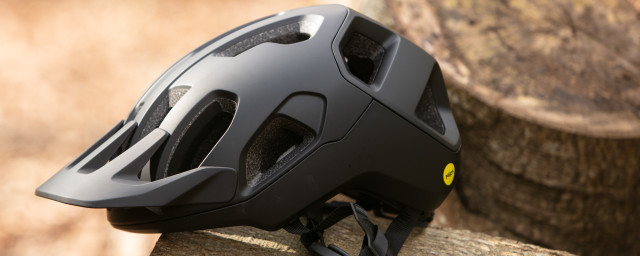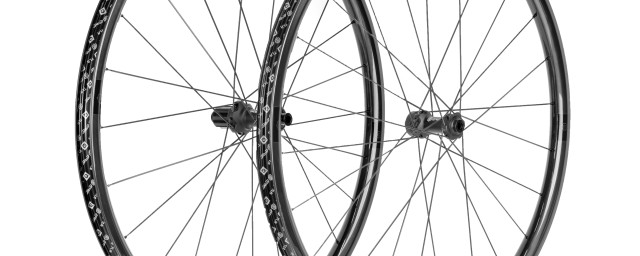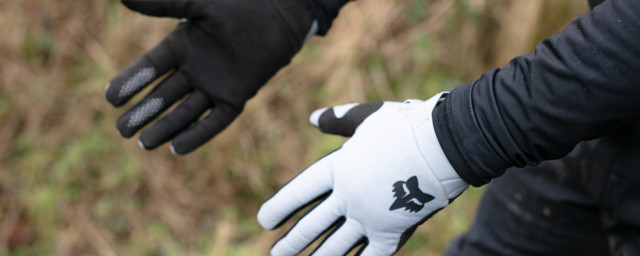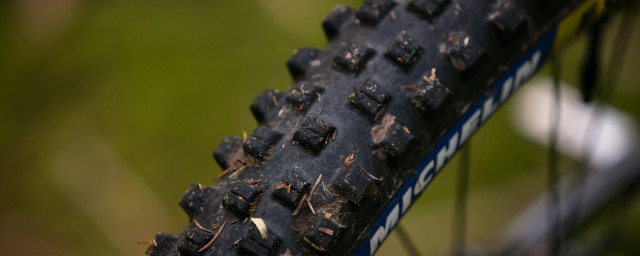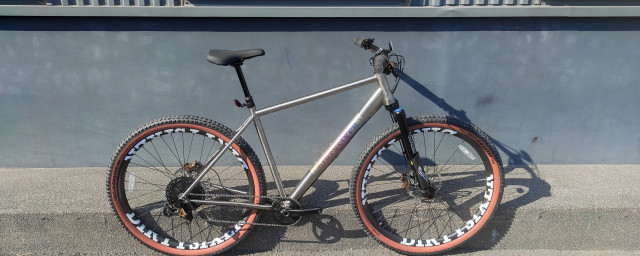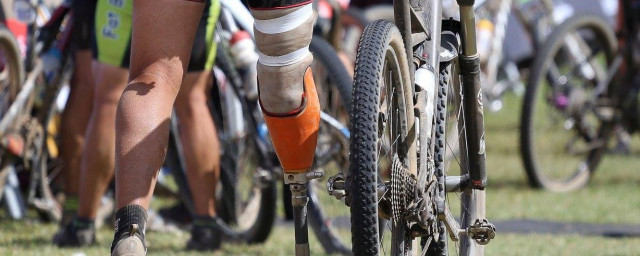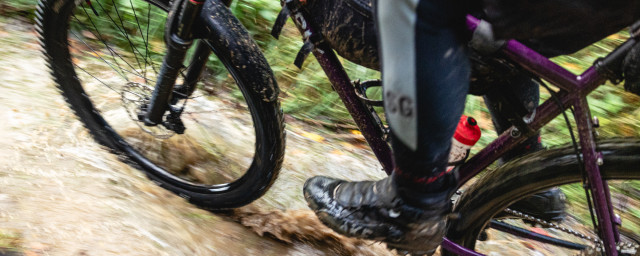Tubed vs tubeless tyres – everything you need to know
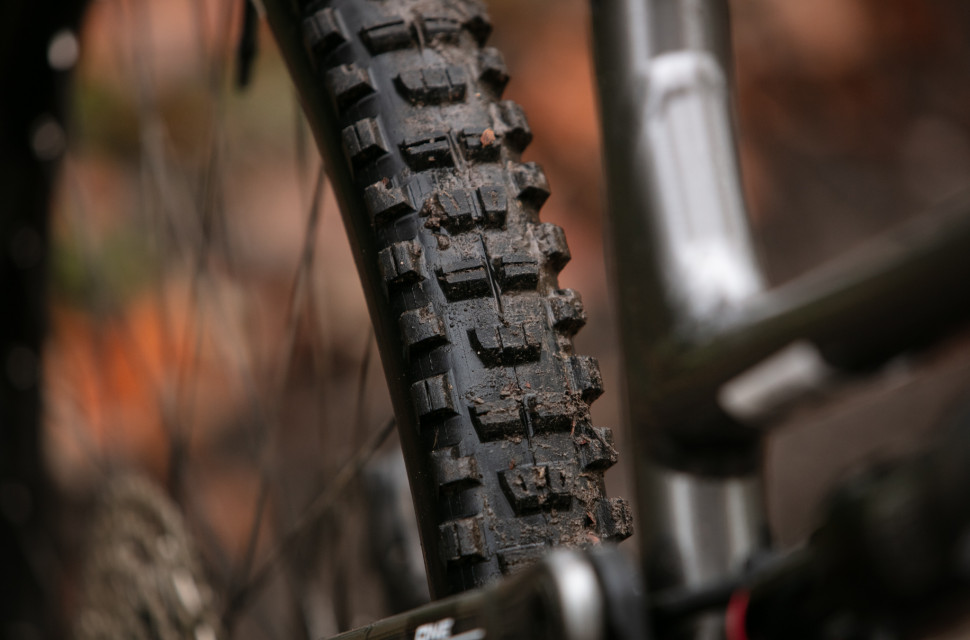
Available in a staggering diversity of casing widths, tread patterns and compounds, mountain bike tyre (or gravel tyre) choice and pressure can make you a much faster, more confident rider.
- Best gravel tyres 2024 - fast and grippy rubber for all conditions
- Mountain bike tyre pressures – everything you need to know
- Mountain bike tyres - Everything you need to know about off-road rubber
Delving into the intricacies of tyre casing size and tread pattern choice is too broad and deep a subject for just one article. But there are things that all tyres have in common – they must stay on a rim and keep air. For mountain and gravel bike riders, that means the choice between tubed or tubeless tyres.
Unless you are riding a retro mountain or gravel bike from the late 1990s or early 2000s, you are rolling tubeless tyres, a trend that has evolved over the last two decades. From the first mountain bikes of the 1970s to the early 2000s, off-road tyres were tubed like road bike tyres had been for decades before.
So why did mountain and gravel bike tyres evolve from tubed to tubeless? Speed and trail evolution. For most of mountain biking history, mellow off-road trails with minimal rock gardens or technical features were what riders traversed. Mountain bikers and gravel adventure riders dreaded navigating severe rock gardens and roots for fear of pinch flats. The pinch flat is a specific weakness of tubed tyres, where the terrain would compress the tyre and tube against the rim bead, slicing it and causing a flat.
Better bikes need better tyres
As mountain biking progressed through the 1990s and 2000s, the only riders needing better tyres to conquer more severe terrain were downhill racers and free riders. But by the mid-2000s, frame design, suspension components, and brakes were advancing, becoming better and lighter, creating trail bikes capable of clearing long climbs and descending trails with rock gardens and technical features.
The development of better trail mountain bikes in the late-2000s, meant more riders were going faster on steeper trails with rougher surfaces. This created greater demand for better pinch flat resistance and tyres with enhanced mechanical grip, from consumers outside the niche downhill and free-ride mountain bike segments.
To solve the issues encountered by nascent trail and enduro bike riders, the solution was to go beyond tubed tyres, which required very high pressures to prevent pinch flatting and reduce grip. An overinflated tubed tyre will skid everywhere, with poor grip, which means it won't be very confident-inspiring to ride on technical descending trails even if it has an aggressive tread block profile.
Inspired by the off-road motorcycle industry, mountain bike tyre designers adopted tubeless systems. Using sealant to marry the tyre bead to redesigned rim shapes, the tubeless mountain bike tyre has revolutionised the sport – and, in time, the gravel bike category, too.
Tubeless tyres allow riders to run at much lower pressures than tubed tyres, enhancing grip and reducing rider fatigue. A tubeless tyre running low pressure can deform and shape to optimise its contact pact, extracting the most available grip as you negotiate those rock gardens, roots and rutted switchback braking zones.
The thorny issue
Beyond downhill, freeride and trail mountain bikers adopting tubeless, there’s a sound reason why the tubeless tyre revolution has become a default fitment for nearly all mountain and gravel bikers: thorns. Riders from Africa, Australia, southern Spain, Texas and the desert Southwestern States of the US, know the risk that thorns pose for tyres.
Many thorn clusters are almost impossible to distinguish from the general trail surface and ground cover, but all thorns are the undoing of tubed tyres. And once you are glueing the umpteenth patch of the day on your ride, the vulnerability of tubed tyres to thorny patches of terrain becomes obvious.
Although endurance-focused mountain bikers and gravel adventure riders remained committed to tubed tyres deep into the 2000s, the inner tube’s fragility would never compete with tubeless casings. Mountain biking’s most celebrated endurance stage race, the Cape Epic, finally convinced the fittest cross-country riders that tubeless was the future.
The Cape Epic route always features some devilish thorn sections through the Western Cape province of South Africa. These are often, ironically, found adjacent to the neat vineyards or orchards of farms that link the Cape Epic route. European pro and amateur riders alike, unfamiliar with thorn risk, have lost a lot of time over the years by not running tubeless at the Cape Epic, wasting valuable minutes repairing thorn-punctured inner tubes.
Are tubes redundant for MTB and gravel riding?
Yes and no. Only entry-level mountain and gravel bikes are equipped with tubed tyres and a tubeless conversion is usually the first required ‘upgrade’ new owners make. The sheer scale of tubeless tyre adoption and use means that tubes for off-road riding aren’t the standard even more, not even nearly.
But are they redundant? No, they most certainly are not. Although tubeless tyres are tough and sealant will combat the deflation risk of most punctures, they’re not flawless. If you suffer a large enough sidewall gash, all the tubeless sealant and plugging won’t prevent your tyre from flatting.
Tubes are essential in every mountain and gravel bike rider’s kit bag as part of an emergency inflation system. When your tubeless fluid has leaked out from that catastrophic sidewall gash, inserting a tube and inflating it is the only way you will ride home instead of pushing.
The tyre and tube industry responded to the role of inner tubes as an emergency solution by producing lighter options with better foldability. Pirelli and Schwalbe are two recognised tyre technology brands that have developed ultra-lightweight inner tubes during the last few years.
Pirelli’s SmartTube Scorpion and Schwalbe’s Aerothan are inner tubes that are easy to fold into a compact shape without ruining the material integrity making them nearly 70% lighter and 50% smaller when folded. Made from more advanced materials like thermoplastic polyurethane, instead of traditional butyl, these new-generation products also offer better puncture resistance and riding characteristics than legacy inner tubes.
Lighter, convenient-to-carry inner tubes are great for mountain and gravel riders who want that bail-out option if they suffer a severe tubeless tyre failure. So, even in an off-road cycling world where tubeless is the standard fitment tyre, tubes still have their place, in the jersey pocket or strapped to the underside of your top tube, as an emergency repair component.




